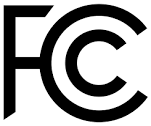 The FCC's office of engineering and technology has authorized the first LTE unlicensed (LTE-U) devices for operation in the 5 GHz Wi-Fi band. According to a release from the FCC, the action followed a successful industry collaboration to ensure that LTE-U can co-exist with Wi-Fi and other unlicensed devices operating in the band.
The FCC's office of engineering and technology has authorized the first LTE unlicensed (LTE-U) devices for operation in the 5 GHz Wi-Fi band. According to a release from the FCC, the action followed a successful industry collaboration to ensure that LTE-U can co-exist with Wi-Fi and other unlicensed devices operating in the band.
The FCC noted that industry has developed various standards, including Wi-Fi, Bluetooth and Zigbee, that share the 2.4 GHz spectrum and don't interfere with each other.
LTE-U monitors the Wi-Fi spectrum and taps the least utilized channels to increase data capacity. When Wi-Fi demand increases, LTE-U "backs off" to allow Wi-Fi to use the bandwidth.
The LTE-U equipment that was certified was tested to ensure it met FCC rules and passed the co-existence test plan developed by the industry group. Since passing the co-existence test plan was not an FCC requirement, these test results are not included in the FCC's equipment certification records.
Ajit Pai, FCC chairman, released a statement acknowledging the milestone:
LTE-U allows wireless providers to deliver mobile data traffic using unlicensed spectrum while sharing the road, so to speak, with Wi-Fi. The excellent staff of the FCC’s office of engineering and technology has certified that the LTE-U devices being approved today are in compliance with FCC rules. And voluntary industry testing has demonstrated that both these devices and Wi-Fi operations can co-exist in the 5 GHz band. This heralds a technical breakthrough in the many shared uses of this spectrum.
Following the FCC's release, U.S. cellular operator T-Mobile announced it is deploying LTE-U technology, using network equipment from Ericsson and Nokia, and will begin rolling out the service this spring. The service will enable customers with LTE-U capable handsets to tap into 20 MHz of 5 GHz spectrum.
Verizon has been testing LTE-U and also plans to deploy the service.
For more information
- LTE-U Forum
- LTE in unlicensed spectrum - Wikipedia
